


 |
 |
 |
Portions of the content below was initially authored by Don Hollway.
Supplemented and expanded by Area 51 Special Projects webmaster.
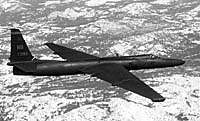
 |
 |
 |
| U-2s parked at Groom Lake - 1956 | Early U-2 flown by Air Force | U-2 Overflight |
 |
 |
 |
| Early U-2 | Gary Powers | Gary Powers |
 |
 |
 |
| U-2 Cockpit | A-2 Camera | Camera Installation |
 |
 |
 |
| Tyuratam | Semiplatenski | Incirlik |
 |
 |
 |
|
Leningrd |
Moscow |
Cuba |
After a Russian missile made "just one more" U.S. spy plane flight the last, American pilot Gary Powers found himself facing KGB interrogators in Moscow while Dwight Eisenhower faced possible embarrassment at home.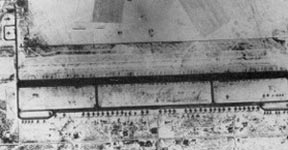
For an interrogation chamber in Moscow's infamous Lubyanka prison, headquarters of the KGB, the room was surprisingly roomy and well-lit. The prisoner wore a freshly blackened eye and, to replace his confiscated flight uniform, a shabby, too-large suit, pants without a belt and shoes without laces, to prevent him from hanging himself. He was brought in and seated at one end of a long table, an interpreter on one side and KGB interrogators on the other.
The stenographer entered the date -- May 1, 1960 -- and, as the questions and answers began, started typing:
What is your name? -- Francis Gary Powers. What is your nationality? -- American. What type of aircraft were you flying? -- A Lockheed U-2. Why did you fly over Russia?
Powers had insisted he had simply wandered off course and crossed into the Soviet Union unintentionally. But he 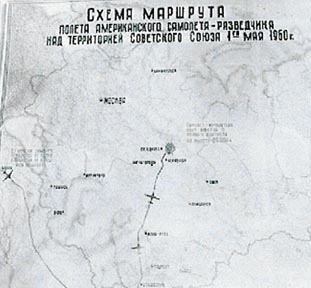
had been shot down over Yekaterinburg (Named Sverdlovsk up to 1924), more than 1,300 miles inside the border, and his captors had recovered a wealth of incriminating evidence from his person and the wreckage of his aircraft: detailed flight maps, a Department of Defense/ Department of the Air Force ID card, Russian rubles, gold francs, a hunting knife, a silenced .22 pistol, and a seemingly innocuous pin found in the prisoner's pocket. Powers warned his captors to handle that last item with extreme caution.
Closer examination revealed the pin to be a sheath for an even smaller, extremely sharp needle -- tipped with curare.
In 1956, 1st Lt. Francis Gary Powers, son of a Virginia coal miner, had been a 26-year-old U.S. Air Force fighter pilot flying Republic F-84G Thunderjets. He excelled at aerial gunnery, was trained in aerial photography work and atomic-weapons delivery, and had a corresponding "Top Secret" rating. But he had graduated from high school too late for World War II and from aviation cadet training too late for the Korean War, and he still felt he had something to prove.
Developing The U-2
On Soviet Aviation Day in 1955 (May 1, popularly referred to as May Day), Western observers in Moscow had watched, awestruck, as formation after formation of new Myasishchev Mya-4 "Bison" jet bombers thundered overhead. Washington then had no means to dispel growing fear of a "bomber gap," despite secret, short-range incursions into the Soviet Union by spying U.S. Air Force fighters and bombers. Many of these spy planes did not return, however, and the Soviet interior was as unknown to America as the 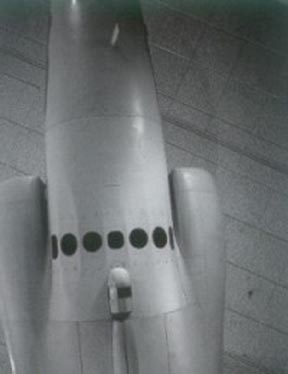
New World was to medieval Europe. President Dwight D. Eisenhower's "Open Skies" policy, an effort to bare both the United States' and Soviets' military programs to international scrutiny, had been rejected by Nikita Khrushchev, the Soviet premier. The Central Intelligence Agency (CIA) issued a requirement for an airplane that could overfly Russia -- with or without Soviet permission.
In response, Lockheed's special design unit, known as the "Skunk Works," produced a jet-powered sailplane weighing just 6 tons empty, with a fuselage -- barely half the length of the wingspan -- wrapped around a powerful Pratt & Whitney J57 jet engine. The "Q-bay" below and behind the cockpit carried a massive Hycon "B-camera" with six times the resolution of a human eye, able to shoot a newspaper page from 13 miles up, or record a view 750 miles across, on Mylar film no thicker than kitchen plastic wrap. The project was code-named "Aquatone," and the plane, "Idealist." The Lockheed designers called the plane the "Angel," but its official designation was Utility-2. It would become known to the world simply as the U-2.
The CIA offered crack fighter pilot Francis Gary Powers $30,000 a year -- today worth well over three times that amount -- to fly its top-secret bird higher than anyone had ever flown before. Over Soviet Russia.
Where did you learn to fly the U-2? -- In the United States. Where in the United States? -- A base on the West Coast. What is it called? -- Watertown.
To insiders, Watertown Strip, in the remote Nevada desert, was known simply as "the Ranch." A 1956 press release had admitted its existence, as well as that of the U-2, under the cover of "upper atmosphere research."
The only research Powers and the rest were doing was to stretch the U-2's operating limits, or envelope. In thin stratospheric air, the airspeed margin between its top and stall speeds amounted to just a few knots, and was known to the pilots as the "coffin corner." If the pilot allowed the airplane to speed up slightly, the airplane would get into the dangerous area of compressibility, near the sound barrier. Let it slow down 
slightly and a stall would result that would require many thousands of feet for recovery -- if it could recover at all.
How High Can You Go?
The J57, capable of only 6 percent of its sea-level thrust while at its operational altitude, became susceptible to flameouts, necessitating a 30,000-foot dive to a restart. Also, the lift generated by wings designed for flying in thin, stratospheric air made the plane reluctant to land; it tended to porpoise just above the runway unless the pilot put it into a stall. Then, unless he had perfectly balanced his fuel load between the wings, the plane might tip over on the bicycle landing gear, dig in one of the wingtip skids and do a ground loop. The previous class at Watertown had suffered a fatality when a pilot miscalculated his approach and crashed on the strip.
In spite of the problems, or maybe because of them, Powers and the rest of the pilots loved the U-2. It could take off in less than 1,000 feet, climb at an angle of better than 45 degrees to 80,000 feet, and maintain that altitude for 4,000 miles. Once, from high above the Colorado River in Arizona, Powers could see the California coast from Monterey halfway down Baja. U-2 pilots made it a daily practice to exceed the international altitude record set in 1955 by an English Electric Canberra at 65,889 feet, although, of course, U-2 flights were not publicized. "There was only one thing wrong with flying higher than any other man had ever flown," Powers would recall later. "You couldn't brag about it."
President Eisenhower had the same problem. He could imagine the headlines in The New York Times -- let alone Pravda -- if the world discovered that benevolent Uncle Sam was violating Soviet airspace. The CIA assured him that the plane had two or three years before Soviet anti-aircraft technology caught up with it, and in the unlikely event of an accident, the Russians would be left with no proof of American duplicity -- neither the U-2 nor its pilot would survive. In fact, arguing it would never be so safe again, the CIA advocated an initial mission over Moscow.
When were the first U-2s shipped to Europe? -- I have no idea. When did the first U-2 overflight take place? -- I have no idea. 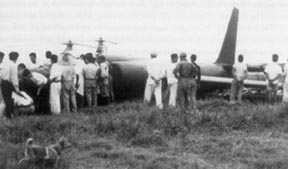
On July 4, 1956, a U-2A out of Wiesbaden, Germany, overflew both Moscow and Leningrad -- Operation Overflight became a reality. The CIA had hoped the U-2 -- with wings so long they reflected primarily high-frequency, rather than radar, waves -- would prove immune not only to attack but to detection. But National Security Agency listening posts in Europe could track the plane's progress as measured by the activation of Soviet radar stations.
Unable to admit that American planes (conceivably carrying nuclear weapons) could overfly the motherland at will, Khrushchev did not publicize the incident. He would, however, make his feelings known to Eisenhower. Neither man deluded himself that that was the end of it. For his part, Eisenhower opted to approve further overflights only on a contingency basis. Khrushchev issued an immediate directive to his armed forces: "Improve rockets! Improve fighter planes!"
What is your unit called? -- Detachment 10-10. Where is it based? -- Incirlik. Where is Incirlik? -- Adana, Turkey.
Powers and his squadron mates, then given the CIA redesignation "Detachment 10-10," found southern Turkey remarkably 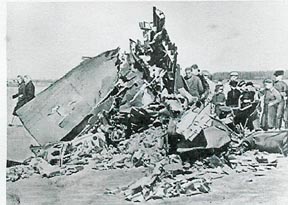
like southern Nevada, except more remote. In August 1956, Incirlik was primarily a refueling stop for U.S. Air Force planes passing through to more important destinations. Housed in an isolated hangar away from the main base, Detachment 10-10 kept up the pretense of weather research but functioned as a combined Air Force/CIA operation, with an Air Force colonel commanding officer, a CIA executive officer, and suspiciously tight security.
At 70,000 feet, U-2 pilots could see more than 300 miles into the Soviet Union without even crossing the border. From Incirlik, U-2s ranged eastward as far as Pakistan and as far west as Albania. During the 1956 Suez Crisis they monitored the troop movements of America's allies, Britain and France -- a secret that, if discovered and made known by the Soviets, might have ruptured the NATO alliance -- and Powers himself overflew the first daylight fighting in the Sinai.
How many missions did you fly along the border? -- One or two in 1956, maybe six to eight in 1957, 10 or 15 each in 1958 and 1959, and several in 1960. How many flights have you made over Russia? -- This was my first. How many? -- Just one.
Actually, Powers made his first overflight -- the first out of Incirlik -- in late 1956, to determine Soviet intentions in the wake of the Hungarian uprising. He remembered later, "There was no abrupt change in the topography, yet the moment you crossed the border you knew the difference." In the years ahead he would come to know the feeling well.
No sooner did U-2s reveal the myth of the bomber gap (it was now believed the several Bison formations seen at the 1955 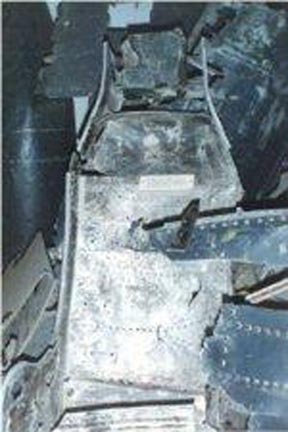 May Day demonstration were an illusion, that only one formation existed, which had circled out of sight and back again) than the Russians successfully fired an ICBM and a pair of Sputnik satellites. From on high, U-2 pilots had a spectacular view of night launches lighting up the cloudscape for hundreds of miles in all directions. The bomber gap became the missile gap.
May Day demonstration were an illusion, that only one formation existed, which had circled out of sight and back again) than the Russians successfully fired an ICBM and a pair of Sputnik satellites. From on high, U-2 pilots had a spectacular view of night launches lighting up the cloudscape for hundreds of miles in all directions. The bomber gap became the missile gap.
Just One More Year
When the U-2 pilots were asked to extend their contracts another year, they insisted their families be allowed to join them at Incirlik. Powers' wife, Barbara, much to the annoyance of his superiors, had already followed him to Athens, where he had told her he was stationed. The CIA had stashed her in an out-of-the-way job at Wheelus Air Force Base, Tripoli.
The pilots' tours were extended a year at a time in 1957, 1958 and 1959. The U-2s alerted the Strategic Air Command (SAC) to 17,000 new potential targets and revealed the missile gap to be as much a Soviet propaganda coup as the bomber gap. Many Soviet rocket launches failed explosively, and production was proceeding at nowhere near the pace claimed by Moscow; by late 1959, the Soviets still did not have a single operational ICBM. Eisenhower, however, could not dispel American fears without divulging violations of Soviet airspace. It was a typical Cold War situation: neither side happy with the continuing overflights, neither side able to stop them. Neither side could even admit to the existence of the U-2.
Publicly, both sides attempted to reach detente. In 1959, Khrushchev visited the United States and Vice President Richard M. Nixon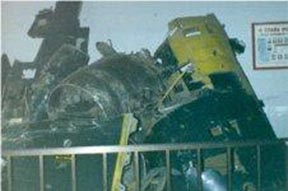
visited the Soviet Union, and a major summit was scheduled for Paris in May 1960. There, Eisenhower hoped to reach a major arms-limitation agreement -- what would amount to his crowning achievement in two terms as president, almost guaranteeing a Republican victory in the 1960 election and his own place in history. To avoid sullying this rosy picture, he forbade further U-2 missions over Russia.
How 'Bout Just One More Look?
Operation Overflight was nearly through. With the impetus of Soviet competition, America's own space program was moving ahead, if only in fits and starts. By the end of the year, it was hoped, all overflights of Russia could be made by spy satellites. The Air Force (which had turned down Lockheed's original design) was now angling for control of all U-2 operations; the KGB had compromised a German detachment, forcing the CIA to move those pilots to Incirlik.
The CIA, however, wanted a last look at suspected new ICBM sites under construction in certain areas of the northern Ural Mountains and White Sea at Tyuratam, Sverdlovsk, and especially Plesetsk, 600 miles north of Moscow, where it believed ICBMs were already operational. At that latitude, the angle of sunlight allowed effective photography only from April though July; if a U-2 didn't make the flight then, the attempt would have to wait until 1961.
Eisenhower agreed to allow only two overflights, to take place in April 1960, well in advance of the Paris summit. The first, 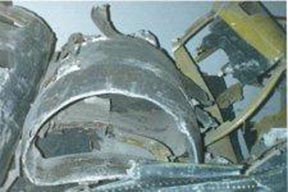
on the 9th, received surprisingly little attention from Moscow. It is possible that Khrushchev, who had been extolling Eisenhower's virtues to the Communist elite, was humiliated before his considerable Kremlin opposition by this latest example of American deceit, and withdrew from public view to consider his options.
Back For The Party
Russian silence encouraged the CIA, which seemed determined to make its last mission a big one. To compensate for the loss of the German operation and to increase coverage of Red China, the agency had set up bases in Taiwan, at Atsugi in Japan, Lahore and Peshawar in Pakistan, and Bodo in Norway. Now they proposed to send a U-2 completely across the Soviet Union, from Peshawar to Bodo. And they wanted Francis Gary Powers to fly it.
By that time, Powers was the most experienced U-2 pilot in the world; for him, overflights had become routine. In the beginning he had worried about the possibility of being shot down. Horror stories of Korean War POWs -- brainwashing and torture -- had led the CIA Agency to furnish U-2 pilots with cyanide capsules and the infamous poison needle hidden in a bisected silver dollar. Powers never took them along. Like the other pilots, he considered their use optional, not mandatory.
Ironically, as the threat increased, Powers had become more and more cavalier. The morning of his departure for Peshawar, he even packed his wallet, with an assortment of American, German and Turkish money, for his layover in Norway; his wife packed him a lunch for the shuttle flight to Pakistan. Their main concern was whether he would be back in Incirlik in time for a party on Sunday night, May 1. The overflight was scheduled for Thursday, April 28; Powers figured he'd be back in plenty of time.
For an interrogation chamber in Moscow's infamous Lubyanka prison, headquarters of the KGB, the room was surprisingly 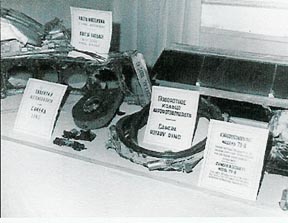
roomy and well-lit. The prisoner wore a freshly blackened eye and, to replace his confiscated flight uniform, a shabby, too-large suit, pants without a belt and shoes without laces, to prevent him from hanging himself. He was brought in and seated at one end of a long table, an interpreter on one side and KGB interrogators on the other.
The stenographer entered the date -- May 1, 1960 -- and, as the questions and answers began, started typing:
What is your name? -- Francis Gary Powers. What is your nationality? -- American. What type of aircraft were you flying? -- A Lockheed U-2. Why did you fly over Russia?
Powers had insisted he had simply wandered off course and crossed into the Soviet Union unintentionally. But he had been shot down over Sverdlovsk, more than 1,300 miles inside the border, and his captors had recovered a wealth of incriminating evidence from his person and the wreckage of his aircraft: detailed flight maps, a Department of Defense/ Department of the Air Force ID card, Russian rubles, gold francs, a hunting knife, a silenced .22 pistol, and a seemingly innocuous pin found in the prisoner's pocket. Powers warned his captors to handle that last item with extreme caution.
Closer examination revealed the pin to be a sheath for an even smaller, extremely sharp needle -- tipped with curare.
In 1956, 1st Lt. Francis Gary Powers, son of a Virginia coal miner, had been a 26-year-old U.S. Air Force fighter pilot flying Republic F-84G Thunderjets. He excelled at aerial gunnery, was trained in aerial photography work and atomic-weapons delivery, and had a corresponding "Top Secret" rating. But he had graduated from high school too late for World War II and from aviation cadet training too late for the Korean War, and he still felt he had something to prove.
Developing The U-2
On Soviet Aviation Day in 1955 (May 1, popularly referred to as May Day), Western observers in Moscow had watched, awestruck, as formation after formation of new Myasishchev Mya-4 "Bison" jet bombers thundered overhead. Washington then had no means to dispel growing fear of a "bomber gap," despite secret, short-range incursions into the Soviet Union by spying U.S. Air Force fighters and bombers. Many of these spy planes did not return, however, and the Soviet interior was as unknown to America as the New World was to medieval Europe. President Dwight D. Eisenhower's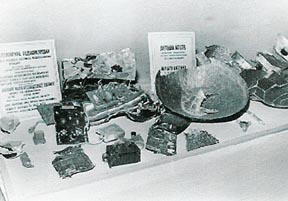 "Open Skies" policy, an effort to bare both the United States' and Soviets' military programs to international scrutiny, had been rejected by Nikita Khrushchev, the Soviet premier. The Central Intelligence Agency (CIA) issued a requirement for an airplane that could overfly Russia -- with or without Soviet permission.
"Open Skies" policy, an effort to bare both the United States' and Soviets' military programs to international scrutiny, had been rejected by Nikita Khrushchev, the Soviet premier. The Central Intelligence Agency (CIA) issued a requirement for an airplane that could overfly Russia -- with or without Soviet permission.
In response, Lockheed's special design unit, known as the "Skunk Works," produced a jet-powered sailplane weighing just 6 tons empty, with a fuselage -- barely half the length of the wingspan -- wrapped around a powerful Pratt & Whitney J57 jet engine. The "Q-bay" below and behind the cockpit carried a massive Hycon "B-camera" with six times the resolution of a human eye, able to shoot a newspaper page from 13 miles up, or record a view 750 miles across, on Mylar film no thicker than kitchen plastic wrap. The project was code-named "Aquatone," and the plane, "Idealist." The Lockheed designers called the plane the "Angel," but its official designation was Utility-2. It would become known to the world simply as the U-2.
The CIA offered crack fighter pilot Francis Gary Powers $30,000 a year -- today worth well over three times that amount -- to fly its top-secret bird higher than anyone had ever flown before. Over Soviet Russia.
Where did you learn to fly the U-2? -- In the United States. Where in the United States? -- A base on the West Coast. What is it called? -- Watertown.
To insiders, Watertown Strip, in the remote Nevada desert, was known simply as "the Ranch." A 1956 press release had admitted its existence, as well as that of the U-2, under the cover of "upper atmosphere research." 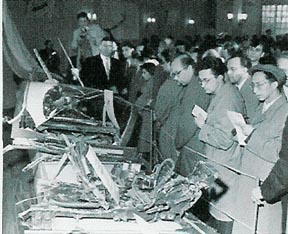
The only research Powers and the rest were doing was to stretch the U-2's operating limits, or envelope. In thin stratospheric air, the airspeed margin between its top and stall speeds amounted to just a few knots, and was known to the pilots as the "coffin corner." If the pilot allowed the airplane to speed up slightly, the airplane would get into the dangerous area of compressibility, near the sound barrier. Let it slow down slightly and a stall would result that would require many thousands of feet for recovery -- if it could recover at all.
How High Can You Go?
The J57, capable of only 6 percent of its sea-level thrust while at its operational altitude, became susceptible to flameouts, necessitating a 30,000-foot dive to a restart. Also, the lift generated by wings designed for flying in thin, stratospheric air made the plane reluctant to land; it tended to porpoise just above the runway unless the pilot put it into a stall. Then, unless he had perfectly balanced his fuel load between the wings, the plane might tip over on the bicycle landing gear, dig in one of the wingtip skids and do a ground loop. The previous class at Watertown had suffered a fatality when a pilot miscalculated his approach and crashed on the strip.
In spite of the problems, or maybe because of them, Powers and the rest of the pilots loved the U-2. It could take off in less than 1,000 feet, climb at an angle of better than 45 degrees to 80,000 feet, and maintain that altitude for 4,000 miles. Once, from high above the Colorado River in Arizona, Powers could see the California coast from Monterey halfway down Baja. U-2 pilots made it a daily practice to exceed the international altitude record set in 1955 by an English Electric Canberra at 65,889 feet, although, of course, U-2 flights were not publicized. "There was only one thing wrong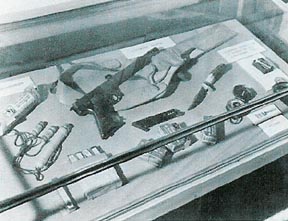
with flying higher than any other man had ever flown," Powers would recall later. "You couldn't brag about it."
President Eisenhower had the same problem. He could imagine the headlines in The New York Times -- let alone Pravda -- if the world discovered that benevolent Uncle Sam was violating Soviet airspace. The CIA assured him that the plane had two or three years before Soviet anti-aircraft technology caught up with it, and in the unlikely event of an accident, the Russians would be left with no proof of American duplicity -- neither the U-2 nor its pilot would survive. In fact, arguing it would never be so safe again, the CIA advocated an initial mission over Moscow.
When were the first U-2s shipped to Europe? -- I have no idea. When did the first U-2 overflight take place? -- I have no idea.
On July 4, 1956, a U-2A out of Wiesbaden, Germany, overflew both Moscow and Leningrad -- Operation Overflight became a reality. The CIA had hoped the U-2 -- with wings so long they reflected primarily high-frequency, rather than radar, waves -- would prove immune not only to attack but to detection. But National Security Agency listening posts in Europe could track the plane's progress as measured by the activation of Soviet radar stations.
Unable to admit that American planes (conceivably carrying nuclear weapons) could overfly the motherland at will, Khrushchev did not publicize the incident. He would, however, make his feelings known to Eisenhower. Neither man deluded himself that that was the end of it. For his part, Eisenhower opted to approve further overflights only on a contingency basis. Khrushchev issued an immediate directive to his armed forces: "Improve 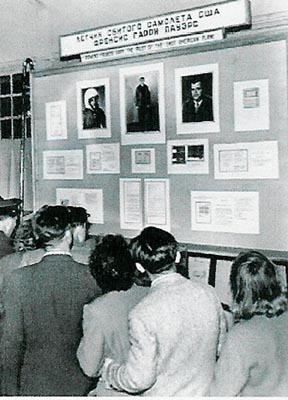
rockets! Improve fighter planes!"
What is your unit called? -- Detachment 10-10. Where is it based? -- Incirlik. Where is Incirlik? -- Adana, Turkey.
Powers and his squadron mates, then given the CIA redesignation "Detachment 10-10," found southern Turkey remarkably like southern Nevada, except more remote. In August 1956, Incirlik was primarily a refueling stop for U.S. Air Force planes passing through to more important destinations. Housed in an isolated hangar away from the main base, Detachment 10-10 kept up the pretense of weather research but functioned as a combined Air Force/CIA operation, with an Air Force colonel commanding officer, a CIA executive officer, and suspiciously tight security.
At 70,000 feet, U-2 pilots could see more than 300 miles into the Soviet Union without even crossing the border. From Incirlik, U-2s ranged eastward as far as Pakistan and as far west as Albania. During the 1956 Suez Crisis they monitored the troop movements of America's allies, Britain and France -- a secret that, if discovered and made known by the Soviets, might have ruptured the NATO alliance -- and Powers himself overflew the first daylight fighting in the Sinai.
How many missions did you fly along the border? -- One or two in 1956, maybe six to eight in 1957, 10 or 15 each in 1958 and 1959, and several in 1960. How many flights have you made over Russia? -- This was my first. How many? -- Just one.
Actually, Powers made his first overflight -- the first out of Incirlik -- in late 1956, to determine Soviet intentions in the wake of the Hungarian uprising. He remembered later, "There was no abrupt change in the topography, yet the moment you crossed the border you knew the difference." In the years ahead he would come to know the feeling well.
No sooner did U-2s reveal the myth of the bomber gap (it was now believed the several Bison formations seen at the 1955 May Day demonstration were an illusion, that only one formation existed, which had circled out of sight and back again) than the Russians successfully fired an ICBM and a pair of Sputnik satellites. From on high, U-2 pilots had a spectacular view of night launches lighting up the cloudscape for hundreds of miles in all directions. The bomber gap became the missile gap.
Just One More Year
When the U-2 pilots were asked to extend their contracts another year, they insisted their families be allowed to join them at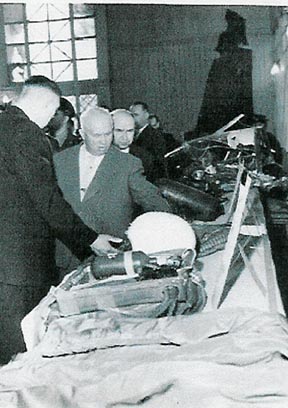
Incirlik. Powers' wife, Barbara, much to the annoyance of his superiors, had already followed him to Athens, where he had told her he was stationed. The CIA had stashed her in an out-of-the-way job at Wheelus Air Force Base, Tripoli.
The pilots' tours were extended a year at a time in 1957, 1958 and 1959. The U-2s alerted the Strategic Air Command (SAC) to 17,000 new potential targets and revealed the missile gap to be as much a Soviet propaganda coup as the bomber gap. Many Soviet rocket launches failed explosively, and production was proceeding at nowhere near the pace claimed by Moscow; by late 1959, the Soviets still did not have a single operational ICBM. Eisenhower, however, could not dispel American fears without divulging violations of Soviet airspace. It was a typical Cold War situation: neither side happy with the continuing overflights, neither side able to stop them. Neither side could even admit to the existence of the U-2.
Publicly, both sides attempted to reach detente. In 1959, Khrushchev visited the United States and Vice President Richard M. Nixon visited the Soviet Union, and a major summit was scheduled for Paris in May 1960. There, Eisenhower hoped to reach a major arms-limitation agreement -- what would amount to his crowning achievement in two terms as president, almost guaranteeing a Republican victory in the 1960 election and his own place in history. To avoid sullying this rosy picture, he forbade further U-2 missions over Russia.
How 'Bout Just One More Look?
Operation Overflight was nearly through. With the impetus of Soviet competition, America's own space program was moving ahead, if only in fits and starts. By the end of the year, it was hoped, all overflights of Russia could be made by spy satellites. The Air Force (which had turned down Lockheed's original design) was now angling for control of all U-2 operations; the KGB had compromised a German detachment, forcing the CIA to move those pilots to Incirlik.
The CIA, however, wanted a last look at suspected new ICBM sites under construction in certain areas of the northern Ural Mountains and White Sea at Tyuratam, Sverdlovsk, and especially Plesetsk, 600 miles north of Moscow, where it believed ICBMs were already operational. At that latitude, the angle of sunlight allowed effective photography only from April though July; if a U-2 didn't make the flight then, the attempt would have to wait until 1961.
Eisenhower agreed to allow only two overflights, to take place in April 1960, well in advance of the Paris summit. The first, on the 9th, received surprisingly little attention from Moscow. It is possible that Khrushchev, who had been extolling Eisenhower's virtues to the Communist elite, 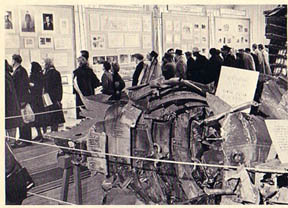
was humiliated before his considerable Kremlin opposition by this latest example of American deceit, and withdrew from public view to consider his options.
Back For The Party
Russian silence encouraged the CIA, which seemed determined to make its last mission a big one. To compensate for the loss of the German operation and to increase coverage of Red China, the agency had set up bases in Taiwan, at Atsugi in Japan, Lahore and Peshawar in Pakistan, and Bod in Norway. Now they proposed to send a U-2 completely across the Soviet Union, from Peshawar to Bod. And they wanted Francis Gary Powers to fly it.
By that time, Powers was the most experienced U-2 pilot in the world; for him, overflights had become routine. In the beginning he had worried about the possibility of being shot down. Horror stories of Korean War POWs -- brainwashing and torture -- had led the CIA Agency to furnish U-2 pilots with cyanide capsules and the infamous poison needle hidden in a bisected silver dollar. Powers never took them along. Like the other pilots, he considered their use optional, not mandatory.
Ironically, as the threat increased, Powers had become more and more cavalier. The morning of his departure for Peshawar, he even packed his wallet, with an assortment of American, German and Turkish money, for his layover in Norway; his wife packed him a lunch for the shuttle flight to Pakistan. Their main concern was whether he would be back in Incirlik in time for a party on Sunday night, May 1.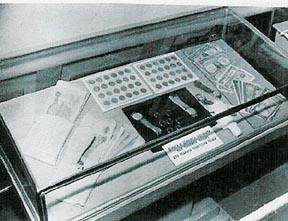
The overflight was scheduled for Thursday, April 28; Powers figured he'd be back in plenty of time.
Bad weather along the planned route caused a 24-hour delay, and then another, and then another. On Sunday morning, Powers started the pre-flight procedure, again figuring the mission would be scrubbed.
He awoke at 2 a.m. to a breakfast of bacon, eggs and toast -- high protein, low residue; to save weight the U-2 carried no provision for pilot relief. Powers spent a half-hour or so as he had so many times before, getting worked into a primitive, rubberized partial-pressure suit, and prebreathing pure oxygen to prevent the bends. His commanding officer asked if he wanted to take the needle along; this time something made him say yes.
Last Checks
Shortly after 5 a.m., lugging a portable oxygen bottle, he was driven out to his plane. Since 1957 the natural metal finish of the 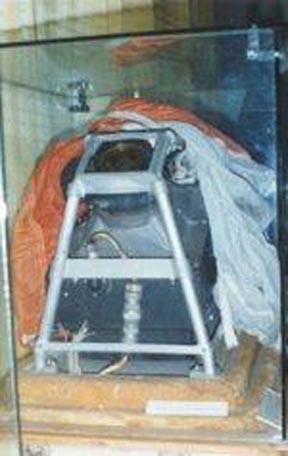
U-2s had been covered in blue-black, radar-absorbent ferrite paint, devoid of distinguishing insignia. This was Aircraft No. 360, Air Force serial No. 56-6693, a U-2B (essentially a U-2A "upengined" with a new Pratt & Whitney J75 power plant to compensate for the ever-increasing mission load). Powers had originally been slated to fly the unit's best aircraft, but after the constant shuttling back and forth to Peshawar during the previous days' delays it had accumulated excessive flight hours and had been grounded for routine maintenance.
The U-2's individualized construction emphasized each planes' particular vices and virtues, and No. 360 was known among the Incirlik pilots as a dog, with chronic fuel-feed problems. The previous September, during a record-high flight over Japan, it had flamed out 10 miles short of Atsugi and crash-landed on a glider-club strip.
Powers sweltered in its cramped cockpit while the ground crew finished its checks of the aircraft and Q-bay. The last system activated was the 2.5-pound explosive self-destruct charge behind the pilot's seat, which, in the event the plane went down, would be armed and set to explode after a 70-second delay, from the cockpit. (The Russians and American cynics would later suggest the timers were set to zero to destroy both planes and pilots, but the delay interval was checked and verified to the pilot's satisfaction before every flight.)
By 6 a.m. all systems were go. Powers awaited only permission for takeoff, which he understood had been held up in Washington. By 6:20 a.m., Powers was certain the mission had been scrubbed and was looking forward to getting out of his sweat-soaked flight suit when word came in, "Go for takeoff."
One Click
The J75 fired up with its distinctive scream. With the instruments reading properly, canopy down and locked, Powers gathered speed down the runway and lifted off, the midwing outrigger "pogo" wheels dropping clear, the U-2 soaring up in the characteristic parabolic-shaped climb.
The Khyber Pass dropped below. On Powers' right, the Himalayas stretched away toward Red China; on his left, the Hindu Kush, toward the Middle East. Down below it was still night; above, the sun shone white-hot and sharp in a sky gone from blue to blue-black. Outside, the temperature dropped to 60 below; air pressure was so low his blood would boil and his body burst if his cabin lost pressurization or his suit lost its integrity. Up, up, up.
Thirty minutes after takeoff, he checked in with Peshawar -- two clicks on the transmitter to signal all systems A-OK. One click in reply would mean proceed as planned; three, mission scrubbed.
One click came back. 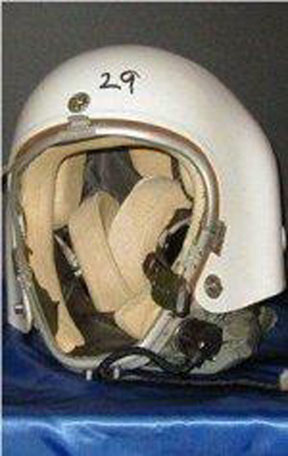
Seen
Now at his operational altitude, Powers crossed the Soviet border near Dushanbe, ex-Stalinabad. Far below, clouds lay up against the mountains' north faces like frothy seas against a shore. In the slightest turbulence the U-2's fragile wings flapped like a bird's. In September 1956 two curious Canadian fighter planes, buzzing a low-flying U-2 over Germany, had inadvertently destroyed it with their turbulence. But up where Powers was flying there was no weather. Just miles and miles of smooth, uniform air.
His course was marked in blue on his route maps, with target areas -- including camera-control instructions -- in red, and escape routes to alternate bases in brown. Flying by time and compass, Powers steered over the socked-in landscape toward Tyuratam, about 30 miles east of the Aral Sea.
Although the clouds obscured the ground, they could not mask the U-2 from Soviet radar. In Moscow, Khrushchev was awakened by a telephone call from his defense minister, Marshal Rodion Malinovsky, who said, "If our anti-aircraft units can keep their eyes open and stop yawning long enough, I'm sure we can knock the plane down."
Powers was an hour and a half into the flight when he saw the first sign that he had been spotted: a white contrail below, stretching out behind an invisibly small, supersonically fast jet fighter, coming toward him. Within a few minutes he saw it again, this time going in the same direction, clearly tracking him.
Unforeseen Problem
He had little to fear from Soviet fighters, although the new MiG-21 could in a zoom-climb carry AA-2 "Atoll" air-to-air missiles to 70,000 feet. More worrisome was the new SA-2 "Guideline" surface-to-air missile (SAM), with a ceiling reportedly comparable to the U-2's. American experts believed that all of those weapons' control surfaces were too small to permit maneuvering in the thin air at 70,000 feet; coasting along unguided ballistic flight paths, they would simply be out-turned by the U-2. However, a jamming device had been installed in the spy planes' tails that would defeat a radar-guided air-launched missile. Powers continued along undisturbed.
There was a gap in the clouds near, but not over, Tyuratam. For what it was worth, Powers duly tripped the plane's cameras and 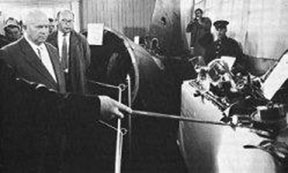 turned north. He was still 50 miles short of Chelyabinsk when the U-2's nose suddenly lurched upward.
turned north. He was still 50 miles short of Chelyabinsk when the U-2's nose suddenly lurched upward.
The autopilot had malfunctioned. A lesser pilot might have lost control then and there, as the plane faltered near its stalling speed. Powers disengaged the autopilot and brought the nose down again, but he could not get the autopilot to work again for more than a few moments at a time.
Accomplish The Mission
Missions had been aborted for less. Going on meant manual control -- 2,500 miles of navigation by dead reckoning, switching the cameras on and off at estimated intervals and making notes for the debriefing, all the while carefully keeping the aircraft within the few knots between top and stall speeds. Aborting meant flying 1,500 miles back to Peshawar, then Adana and ultimately the United States as Operation Overflight wound down.
But Powers was past the worst of the weather. And ahead was Sverdlovsk, the small village on the Iset River now grown into the 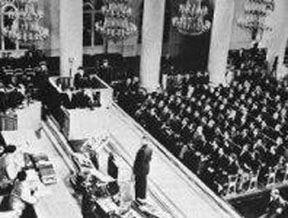
Soviet Union's 10th largest city, an industrial/transportation center over which no U-2 had yet flown. "I decided to go on and accomplish what I had set out to do," Powers would write.
Once past Chelyabinsk, he made a 90-degree left turn -- gingerly, because the U-2's speed margin was so narrow and its wingspan so large that in a turn its outer wingtip could experience Mach buffeting even as the inner one stalled -- and he rolled out in position to pass over the city's southwest quarter.
Missile Attack
MiG-19s already were attempting zoom-climb intercepts. Later it was thought the plane's radar jammer, effective against air-launched missiles, may actually have helped the SAM-guidance radar lock on. No fewer than 14 SAMs were fired simultaneously at the U-2.
Powers had noted an airfield below not marked on his maps. He was set to pass over it when he felt a violent thump from behind. 
An orange glow filled the cockpit, and Powers blurted, "My God, I've had it now!"
None of the missiles had hit, but a near-miss had caused the plane's right stabilizer to fail. (One SAM did manage to down one of the pursuing MiG-19s.) The U-2 started to dive, gently at first, then its fragile wings failed and it began to tumble wildly. Powers' suit inflated -- the cabin had lost its pressurization. The plane was done for. Hurled about the cockpit, Powers managed to flip up the safety covers on the destruct switches but did not flip the switches themselves. Realizing he could be trapped in the plane, he decided he'd better get ready to eject first.
Just Like Home
He had never trusted the ejection seat. To save weight it had been deleted from the original design; then it was found that at the U-2's extreme cruising altitude the plastic canopy froze so hard a pilot could be killed if his seat fired him against it. The seat had been redesigned to punch through the glass but not, as in later models, to pull the pilot's limbs in tight before firing. If his legs were forced out by the plane's spin, Powers estimated the canopy railing would cut both of them off about three inches above the knee.
Very near panic, Powers forced himself to stop and think, only then realizing he could simply climb out. 
Nose up and spinning, the plane was passing through 34,000 feet. Powers released the canopy. Again he thought of the destruct switches, but decided to release his belt first -- and was immediately hurled halfway out onto the windscreen, held only by his air hoses. His facemask frosted over. He tried to feel his way to the switches, but now couldn't reach them. He wondered how far the plane had fallen. "I've just got to save myself now," he thought, and tore himself free.
Captured
Then Powers was floating, until his parachute opened automatically at 15,000 feet. He opened his faceplate and saw the remnants of his plane fluttering toward the Russian countryside, looking very much like his Virginia home.
Powers tore up his maps and, realizing a coin would be the first thing taken from him, pocketed the poison pin and threw the phony silver dollar away. Narrowly missing a set of power lines, he came down hard in a plowed field near a town and was immediately surrounded by curious villagers. 
Within hours Francis Gary Powers was being interrogated in Moscow.
The preliminary interrogation was finally over, and the weary prisoner was taken to his new home, an 8-by-15 foot cell with a steel-reinforced oak door pierced by a peephole. Lit by a single naked light bulb, its only furnishing was a lumpy, steel-slatted bed.
Aftermath
By admitting to what the Soviets probably already knew, or could easily find out, Powers hoped he could continue to conceal greater secrets: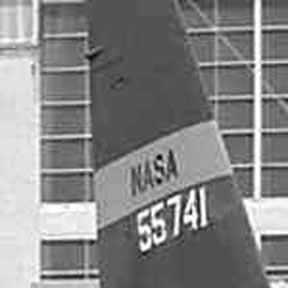
The missions to check on France and Great Britain during the Suez Crisis; the U-2's true performance; the real extent and results of American spy flights. Yet Powers had not realized until then how little training the U-2 pilots had in counterinterrogation. And he could not forget the counsel of the Detachment 10-10 intelligence officer who had said: "You may as well tell them everything, because they're going to get it out of you anyway."
Khrushchev at first allowed the world to believe that Powers was dead, thus giving Eisenhower the opportunity to lie about the U-2 flight. When Khrushchev let the truth be known, it not only embarrassed Eisenhower but also hurt the Republican Party in the 1960 election. In February 1962, President John F. Kennedy agreed to trade Soviet spy Rudolph Abel for Powers. When Powers returned to the United States, he faced accusations that he was a defector or perhaps even a double agent, but he was cleared by the CIA and a congressional panel. On August 1, 1977, he died in a helicopter crash. His wife campaigned to have him buried at Arlington National Cemetery, and President Jimmy Carter approved the request -- Francis Gary Powers had fought the Cold War from the front lines.
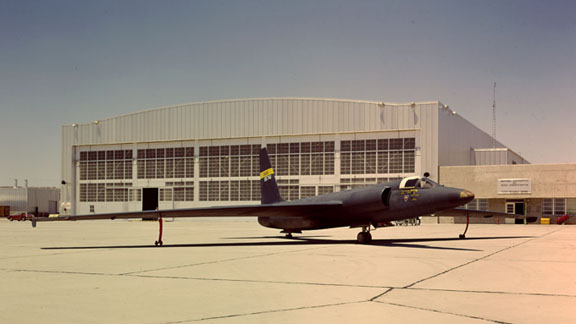
The President said there was a matter he would like to take up with the Council. It was clear that Congress would insist on some kind of investigation of the U-2 incident and the breakup of the Summit Conference. It must be well understood in advance in the Administration how far officials could go in testifying on these matters without endangering our whole intelligence fabric. The U-2 incident was partly out in the open and some questions about over-flights could be answered. However, the President continued, no information should be divulged as to how many over-flights have been made. Congress could be told that over-flights have been going on with the approval of the Secretary of State and our scientific advisers, who have indicated that this method of gathering intelligence is necessary. It should be made clear that basic decisions respecting reconnaissance over-flights of denied territory have been made by the President. However, the impression should not be given that the President has approved specific flights, precise missions, or the timing of specific flights.
Mr. Dulles said he would prefer in his own testimony not to mention the President in connection with the reconnaissance over-flights.
The President said he had in his press conference already referred to his own role in reconnaissance over-flights. Turning to the timing of the last U-2 flight, the President said there was no good time for failure. The question was: Had the risk been measurably greater at the time of the flight than it would have been at any other time? As Ambassador Lodge had said at the UN Security Council meeting, at the time Khrushchev was making his disarmament speech before the UN last year, the U.S. had taken two Soviet spies into custody. The President believed that as long as a powerful government suspected the intentions of another powerful government, intelligence activities would be carried on. He felt that the possibility of a new Pearl Harbor should not be unduly emphasized, nor should we attempt to be dramatic, but we could state publicly that intelligence operations are going on and that we are studying methods of obtaining information. The President remarked that over-flights, before the last one, had been so successful that we may have become careless. He added that the April 9 over-flight could be mentioned publicly since the Soviets had already mentioned it. He repeated that as to timing there was no good time for failure.
The President believed that certain elements in the U.S. would try to make it appear that we had instituted a general military alert on Sunday night, May 15. All that happened was that Secretary Gates had asked him whether it would not be appropriate at that time to make sure that our long-range communications were working efficiently. He had agreed that such a communications alert might be ordered. This test alert was the kind of alert that is conducted regularly. The President felt that in our public statement we should play down the May 15 alert by indicating that it was a test of our long-range facilities. Secretary Gates said that the alert also involved a quiet increase in military command personnel on duty for a test of command procedures.
The President asked whether the pilot of the U-2 which was brought down in Russia had made any flights before this one during his four years with CIA. Mr. Dulles said the pilot, Francis Powers, had made twenty to twenty-five operational flights over denied territory. One of the flights over denied territory was partly aborted because of weather conditions; the plane went through Mongolia and returned. Mr. Dulles added that Powers had been with CIA four years and before that had been with the Air Force for six years. He had been selected for this mission because of his knowledge of Arctic navigation. The President said that when reconnaissance over-flights had been explained to him, he had been told that the pilots on such flights were taught to destroy the plane rather than to let it fall into Soviet hands. The President believed that the blunder of our first statement on the U-2 incident was based on the presumption that the plane was destroyed. Accordingly, we thought the story that a NASA weather reconnaissance plane was missing was a good cover story. The President then remarked that apparently Powers started talking as soon as he touched the ground. Mr. Dulles said that we had traced the U-2 piloted by Powers down to 30,000 feet. Pictures of wreckage of the U-2 published by the Russians showed that parts of the plane have bullet holes. Mr. Dulles believed that bullets fired at the plane while it was in the air may have jammed the destruct mechanism. In any case, the pilot had time to eject himself from the U-2 while it was descending from 70,000 to 30,000 feet and, contrary to Soviet stories, the arming of the destruct mechanism would not have blown up the pilot. The President said apparently the pilot had a flight plan with him when he landed. Mr. Dulles said a flight plan was, of course, necessary to the operation. The President believed that the pilot did not have to carry the flight plan with him while descending from 70,000 feet altitude. Mr. Dulles said he understood the flight plan was found in the cockpit of the downed plane.
Secretary Herter said he understood the timing of the U-2 flight was dictated by technical factors. For example, he had been told that at this season of the year the sun's rays were at the proper angle for good aerial photography and that the weather was apt to be clear over the USSR. He wondered whether this line of thought would be useful in testimony before Congress. The President said the U-2 flights were made because it was necessary for us to find out whether the Soviets were hardening their airbases or not, but of course it was impossible for us to say this publicly. Mr. Dulles said this was the best season of the year for reconnaissance over-flights of the USSR because the weather in that part of the world was apt to be foggy at other times.
Secretary Gates asked whether the pilot of the U-2 had been briefed to tell the truth if he were captured. Mr. Dulles said the pilot had been told to reveal whatever he himself knew, including the fact that he worked for CIA
Mr. Herter wondered whether the fact that we had tracked the U-2 down to 30,000 feet should be revealed. Mr. Dulles preferred to say that we had tracked the plane to the point where it could be shot down. The President wondered why it was necessary for us to reveal that we had tracked the plane down to 30,000 feet. Mr. Dulles explained that the Soviets were announcing that their rockets could shoot a plane down from an altitude of 60,000 - 70,000 feet. It would be re-assuring to our allies if we could inform them that the plane had not been shot down at this high altitude. The President said that nevertheless it bothered him to reveal information of this kind which throws some light on our intelligence activities. Mr. Dillon thought we might say that the Russian pictures revealed bullet holes in the wreckage of the plane, thus implying that the plane had descended to a relatively low altitude before being shot down. Mr. McCone said that Time magazine had stated in its last issue that we tracked the plane down to 30,000 feet. The President said that secret information which revealed our intelligence activities must not be given out. This was a matter which involved the security of the U.S. and the protection of our intelligence operations. The President then added that no one should admit that any person in any nation other than the U.S. has been a party to reconnaissance over- flights. These over-flights should be regarded as solely a U.S operation. The President added that he had proposed a bilateral meeting with Khrushchev in Paris to discuss the over-flights because he wanted to make it clear to Khrushchev that our allies were not involved.
[Here follows discussion of the upcoming summit conference.]
General Twining believed that an investigation, once started, would seek to explore our whole intelligence operation. He wondered whether there was anything we could do to stop the investigation. The President said he would be able to stop an investigation of the advice which his personal advisers had given him but the forthcoming investigation would deal with Administration officials as well as his personal advisers. Accordingly, he felt the investigation could not be stopped. However, he believed Administration officials should testify themselves and not allow their subordinates to speak. General Twining feared that if the investigators probed CIA, they would then want to investigate the JCS operations. The President said Mr. Dulles would reply to the questions asked by the investigators and might have to say that CIA was a secret organization of the U.S. Government.
Secretary Anderson believed that the President's forthcoming TV Address should leave the public with the image of a clear and decisive leader but that it should also say that no apology is due for U.S. efforts to protect the Free World against devastating attack. Moreover, the speech should express the hope that no one in this country will engage in activities which will imperil the capability of the country to protect itself in the future. The speech should contain the implication that there is a limit beyond which investigation cannot go without imperiling our security. Secretary Anderson felt that the image of Pearl Harbor was still in the minds of the people and that they would accept this admonition about security.
The President said that upon his return to this country from Paris, he had deliberately talked about the U-2 incident and the Summit at some length at Andrews Field because at that time he did not intend to make a TV speech. Now he was about to make a TV speech and he understood that the State Department was preparing a White Paper. He wondered whether our opponents would not say we were on the defensive if we continue to make speeches and prepare White Papers. Secretary Herter said the proposed State Department White Paper would cover Soviet espionage activities in the U.S. and other Free World countries.
Secretary Anderson asked whether Mr. Dulles had any estimate regarding the fact that the USSR is sending eighteen of its UN officials home. Mr. Dulles said this move might be due to regular rotation. The eighteen officials would be drawn both from the Soviet Embassy and from the UN. The one thing that was clear was that the Soviets did not like the conduct of Ambassador Menshikov. Secretary Herter said the State Department had been studying the projected return of the Soviet Ambassador and the eighteen other Soviet officials and had been able to see no special significance in the move. There was, however, apparently a kind of mass movement going on. The Polish Ambassador appeared to be going home also.
The President wondered whether it would be a good idea for him to mention in his speech the fact that the State Department is preparing a White Paper on the details of Soviet espionage. Secretary Herter said he preferred to wait until the first draft of the White Paper was prepared. There was a question whether the White Paper could contain enough cases to make it worthwhile without compromising the FBI sources of information. Mr. Dulles asked whether the White Paper would cover Soviet espionage in allied countries. Mr. Dillon said the White Paper would cover such espionage. The President wondered whether this coverage would require us to clear the White Paper with our allies. Mr. Dillon said information in the White Paper about Soviet espionage in allied countries was drawn from public sources.
The President said we had been the leader for peace in the world. In order to remain the leader, we must remain strong and in order to be strong we must obtain intelligence information.
The National Security Council:
Noted, after discussion of the subject, the following instructions by the President regarding statements by Executive Branch officials in public or in Congressional testimony:
a. Discussion of the U-2 incident could include information which the USSR is presumed to know, but should not include any information which would jeopardize any other intelligence sources and methods. Statements should be calm and clear, but not expansive as to details or other intelligence activities. It should be emphasized that the policy of the United States is to seek a just and lasting peace, but to pursue that objective from a position of strength which requires intelligence activities to guard against surprise attack. Therefore, there should be no apologies for our effort to protect the Free World from surprise attack, and we should not imply that any other nations were involved in this U-2 activity. While making clear that the basic decision regarding the U-2 program was made by the President, the impression should not be given that the President approved specific flights, their precise missions or their timing.
b. As to the test alert, it should be made clear that this was of limited scope designed primarily to test long-range communications and command procedures, and that such alerts are necessary to maintain the operational readiness of U.S. armed forces. Authorization was given for more frequent test alerts.
Marion W. Boggs
Source: Eisenhower Library, Whitman File, NSC Records. Top Secret. Pepared by Boggs on May 25.
 |
 |
 |